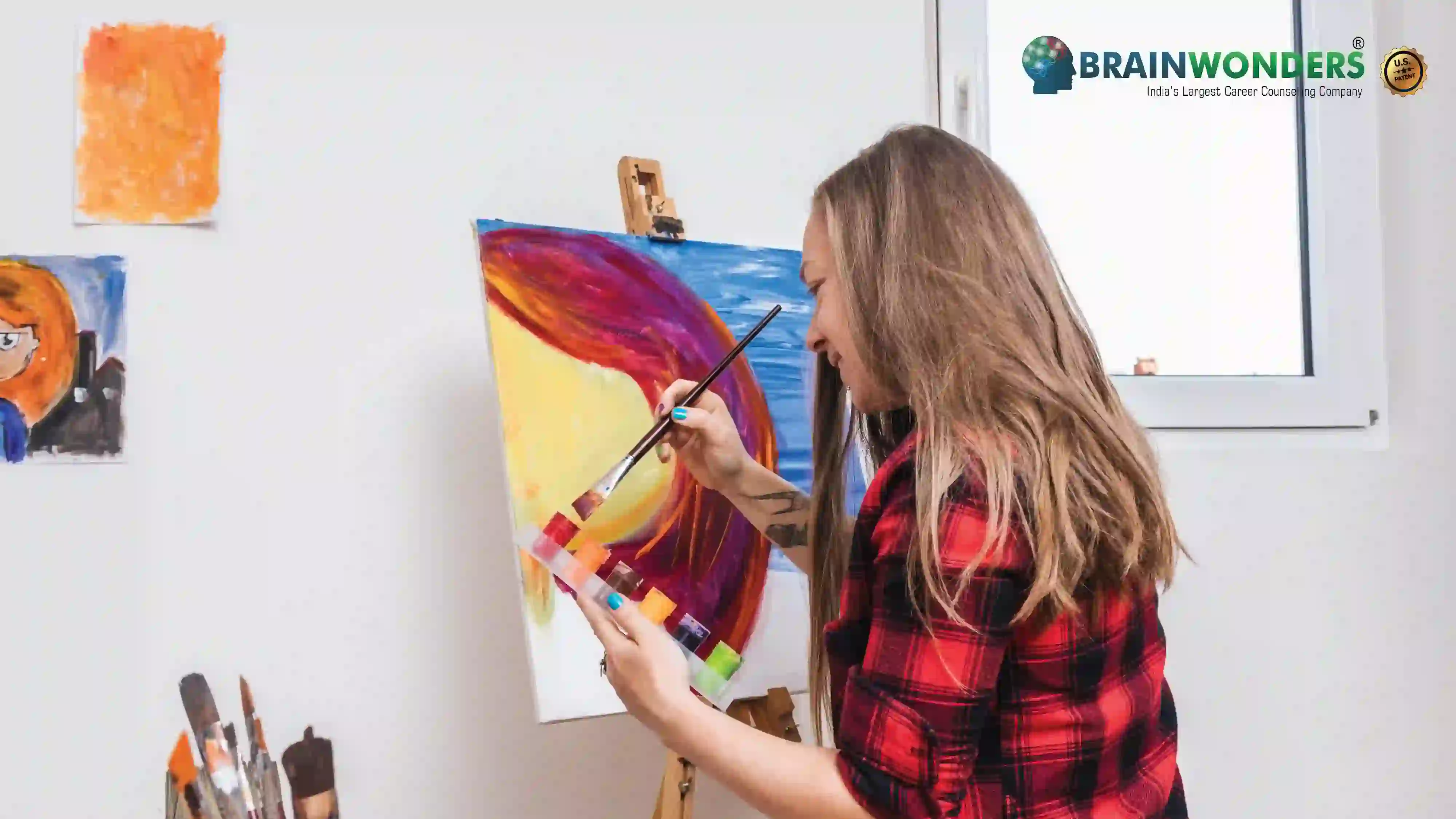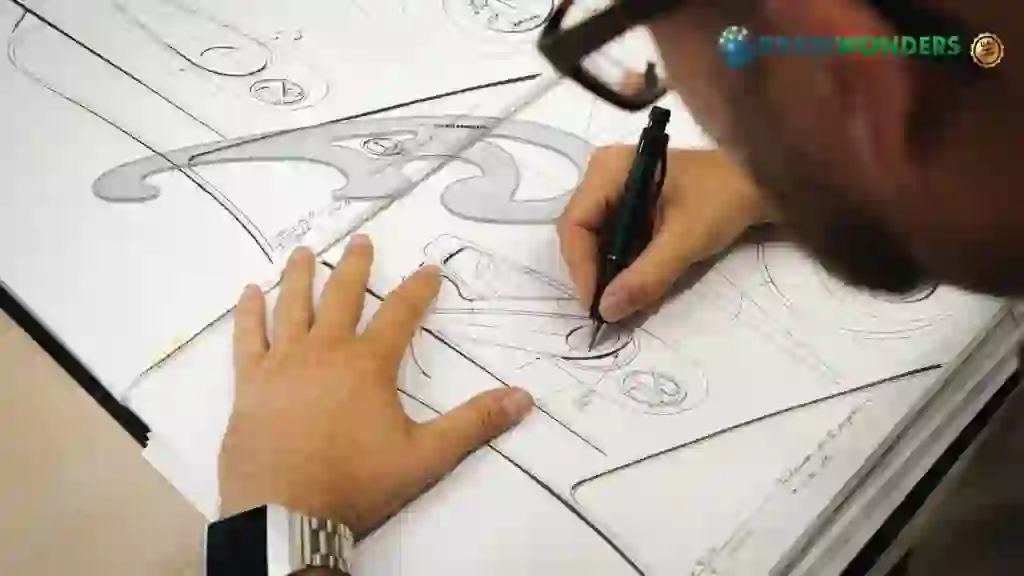How to become a Fine Artists
Overview, Courses, Exam, Colleges, Pathways, Salary

Overview
Who is Fine Artists ?
An individual who is an expert in a specific medium and focuses on a particular subject matter, as well as the type of art like landscapes, portraits or abstract art, is known as a fine artist. They work with different subjects, mediums and even disciplines to search for new ideas in an unexpected manner along with creating original connections. They are allotted a commission to create their own piece of work and selling them to clients directly such as agencies, art galleries or even individual bidders. Most of the artist in this fieldwork in their own professional setting along with working in museums, galleries, educational settings, art institutes or in private studios on special assignments. These artists may also be involved in running art classes, art schools or even getting involved in art projects on a community level. They also apply creative problem-solving strategies in a wide range of modern-day contexts. They create crafts such as pottery, glassware and textiles that are made to be functional.
Typical day at work
What does Fine Artists do?
The main responsibilities of a fine artist that helps them function well in their industry are:
- Consider learning different techniques as well as how to apply them in an artistic way.
- Prepare and manage portfolios of artistic work to exhibit style, interest and abilities.
- Present artwork to shows and galleries.
- Organise exhibitions of artwork for display or sale.
- Collaborate with technical experts like engineers or mechanics to build and install artwork.
- Work with writers who create ideas or stories to make a fine piece of an artist's work.
- Create and prepare sketches and models by provided details from the memory, live models or reference materials.
- Teach artistic techniques to children or adults.
- Keep an eye on styles, techniques, colours, textures, and materials for work purposes.
Abilities and Aptitude needed
What are the skills, abilities & aptitude needed to become Fine Artists?
There are a few abilities and skills mandatorily required to become a fine artist. The ability to come up with fresh and clever ideas about a given topic shows their originality skills. They must also have the ability to come up with a number of ideas with efficient fluency. Their visualisation skills also come in handy to them while they work on creative concepts. They also need the ability of arm-hand steadiness while they create their piece of art. They must also possess the ability to match or detect differences between colours, including shades of colour and brightness. They must have the ability to see details at close range along with seeing details at a distance.
They are required to have a few more skills such as realistic drawing, constructive drawing, ability to draw from life, drawing from memory and imagination, knowledge of art materials and their skilful use, knowledge of the rules of perspective, knowledge of golden proportions, composition skills, artistic talent, determination and commitment, self-belief, the ability to come up with and develop good ideas, good visual communication skill, business and self-promotion skills, technical ability, good organizational skills and the ability to meet deadlines, effective research skills, the ability to work independently and with others, communication skills, stamina and a willingness to put in long hours.
Salary
Salary for Fine Artists?
Salary information for Fine Artists in India:
- Minimum Monthly Salary: The monthly salary may range from INR 10,000 to INR 30,000 for entry-level Fine Artists or those starting their careers. Fine artists working on low-budget projects, freelance commissions, or smaller galleries might fall within this salary range.
- Maximum Monthly Salary: Established and highly successful Fine Artists can earn a maximum monthly income of INR 1,00,000 to INR 5,00,000 or more. It typically applies to artists with a strong reputation, significant demand for their artwork, and successful sales in higher-priced galleries or auctions.
- Annual Salary: The annual salary of a Fine Artist can be from INR 1,50,000 to several crores, depending on their level of experience, the scale of their artistic production, the success of their artworks in the market, and their reputation in the art industry.
- Highest-Paying Job and Scope: The highest-paying opportunities for Fine Artists often arise when they achieve critical acclaim or widespread recognition for their artwork. Renowned Fine Artists with a track record of successful exhibitions, participation in prestigious art fairs, and collectors' interest may command higher prices for their art pieces. Additionally, artists specialising in lucrative markets, such as large-scale sculptures, art installations, or exclusive commissioned projects, can earn higher incomes.The scope for Fine Artists in India is promising as the art market continues to grow and evolve. Fine Artists work on various projects, including paintings, sculptures, drawings, installations, digital art, and mixed media. They can collaborate with art galleries, collectors, interior designers, corporate clients, and public art projects to showcase their creative vision and contribute to the cultural landscape.
Pathways
How to become an Fine Artists?
Entrance Exam
Entrance Exam for Fine Artists ?
Courses
Which course I can pursue?
Best Colleges
Which are the best colleges to attend to become an Fine Artists?
Industries
Which Industries are open for Fine Artists?
Fine artists have the opportunity to work in various industries, utilizing their creative talents and skills to express their artistic vision. Some of the industries open for fine artists include:
- Art Galleries and Museums: Fine artists often exhibit artwork in art galleries and museums. They may also work as gallery assistants, curators, or art educators in these settings.
- Freelance and Commissioned Work: Many fine artists work as freelancers, undertaking commissioned projects for individual clients, businesses, or organizations. It could involve creating custom artwork, illustrations, or designs.
- Advertising and Marketing: Fine artists may collaborate with advertising agencies and firms to create visual content for advertisements, promotional campaigns, and branding materials.
- Animation and Multimedia: Some fine artists work in the animation and multimedia industry, contributing to creating animated films, video games, interactive media, and visual effects.
- Publishing and Illustration: Fine artists may find opportunities in the publishing industry as illustrators for books, magazines, comics, and graphic novels.
- Film and Television: Fine artists with skills in set design, concept art, storyboarding, or special effects can work in the film and television industry.
- Fashion and Textiles: Fine artists may apply their artistic talents to design patterns, textiles, and clothing for the fashion industry.
- Interior Design: Fine artists can collaborate with interior designers to create unique and personalized artwork for commercial and residential spaces.
- Product Design: Some fine artists venture into product design, creating artistic and functional pieces for home decor, furniture, or lifestyle products.
- Art Education: Fine artists can become art teachers or instructors, sharing their knowledge and skills with students of all ages.
- Fine Arts Institutions: Fine artists may work as professors or instructors in fine arts schools, academies, or universities.
- Non-Profit Organizations: Fine artists may contribute creativity to non-profit organizations focused on community art projects, social causes, and public art initiatives.
internship
Are there internships available for Fine Artists?
Internships for fine artists can provide valuable hands-on experience, networking opportunities, and exposure to the art industry. Here are some potential sources to find internships:
- Art Galleries and Museums: Many art galleries and museums offer internship programs to assist with curatorial work, exhibition planning, marketing, or art education. Check their websites or contact their HR departments for available opportunities.
- Artist Studios: Some established artists or art studios may offer internships to aspiring artists. This experience can provide insight into the creative process and artistic techniques.
- Non-Profit Art Organizations: Look for internships at non-profit organizations that promote the arts, support artists, or run community art programs.
- Art Fairs and Events: Art fairs and exhibitions often require extra help during their events. Interning can provide exposure to the art market and connections with industry professionals.
- Art Magazines and Publications: Some art magazines and online publications may offer internships for writers, editors, or designers interested in art journalism and publishing.
- University or College Art Departments: Check with your college or university's art department for internship opportunities, as they may have connections with local art institutions or artists.
- Online Art Platforms: Some online art platforms, galleries, or art marketplaces may have internships related to digital marketing, content creation, or customer support.
- Art Foundations and Residencies: Look for internships with art foundations or residency programs that support artists and their creative projects.
Career outlook
What does the future look like for Fine Artists?
The artwork created by fine artists is generally displayed in museums, commercial or non-profit art galleries, craft fairs, the internet or private properties. Some of their artwork is typically requested by their clients, but most of the work is sold by the artist through private art galleries or dealers. The artist, gallery, and dealer together decide in advance how much of the money from the sale will each keep.
The salary structure of an individual in this profession is quite a decent one. They get frequent opportunities to visit an art gallery or museum with an employee discount. There are a few other benefits included in this career such as entry passes for popular celebrate and royal parties. There is also an immensely great opportunity to explore various art forms in different cultures or places within the country as well as abroad. The projected change in employment is nearly 8% for the decade of 2016 to 2026.
.webp)
.webp)

